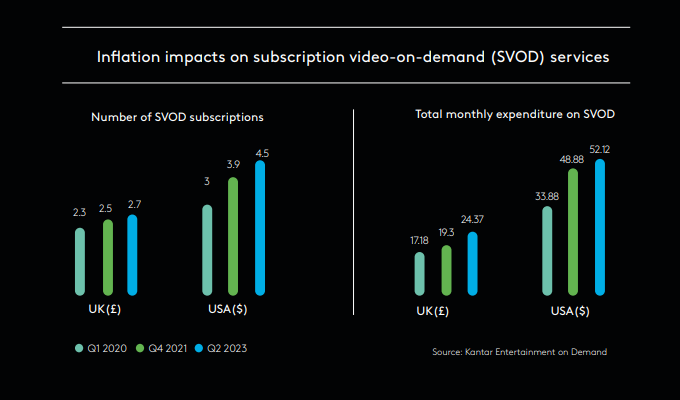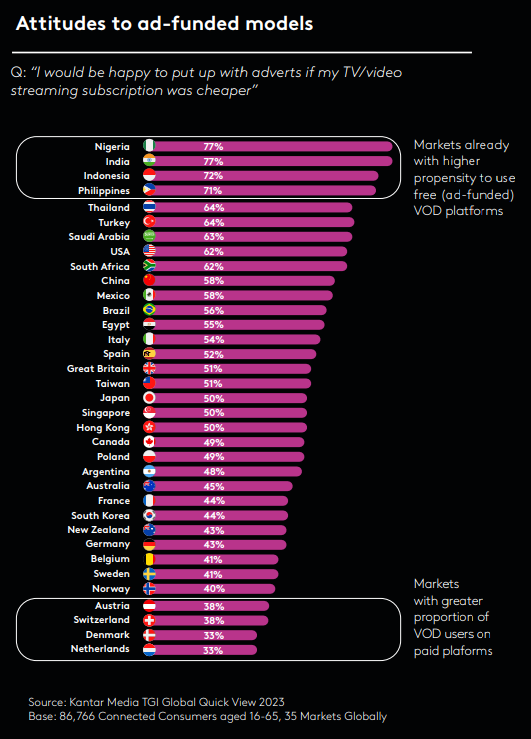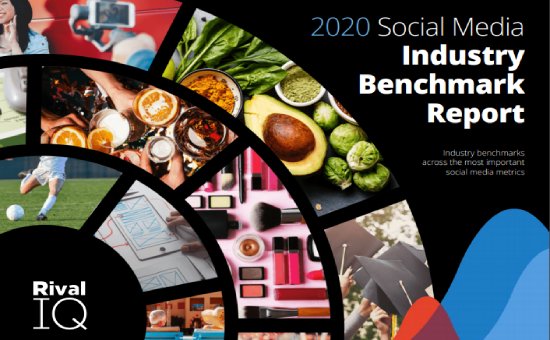Media Trends & Predictions 2024 | Kantar Media
Consumer Behavior |
MACROECONOMICS, MICRO MEDIA STRATEGY: Navigating Economic Shifts in 2023
Inflationary Pressures and Global Economic Outlook:
The economic landscape of 2023 is characterized by persistent inflationary pressures, marked by nuanced effects. The International Monetary Fund (IMF) projects a tempered global growth rate, decreasing from an estimated 3.5% in 2022 to 3.0% in 2023.
Despite economic challenges, advertising revenue growth remains reasonably stable, with GroupM forecasting a positive nominal growth of 5.9%.

Media Subscription Challenges Amid Economic Shifts:
In the face of economic uncertainties, many video-on-demand (VOD) platforms continue to grapple with the impact of inflation on consumer behavior.
Despite economic shifts, platforms have increased subscription prices, leading to a rise in cancellations. The UK market, for instance, witnessed a notable increase in subscription cancellations, indicating a dynamic response to economic pressures.
Macro and Microeconomic Disparities:
While macroeconomic trends shape the overall economic landscape, disparities emerge among markets. Developed nations, such as the US and Europe, experience widening wealth gaps, influencing individual purchasing behaviors. In the UK, high inflation rates have led to a decline in overall satisfaction with living standards, with significant variations among different income cohorts.
Spending Priorities and Global Consumer Trends:
Global consumer trends shed light on spending priorities during economic uncertainties. When faced with unexpected costs, data reveals diverse spending priorities.
Savings and investments emerge as a top priority for 38% of consumers globally, while leisure activities, holidays, and technology purchases also factor in. Interestingly, online subscription services, including media subscriptions, rank lower in spending priorities.
Regional Variances in Media Consumption Patterns:
In-depth analysis of viewing patterns across markets highlights significant regional variances. Factors such as seasonal events and cultural values influence viewing behaviors.
Preferences for paid versus free video-on-demand (VOD) services vary regionally, emphasizing the need for market-specific advertising strategies to cater to diverse audience behaviors.
Evolution of Media Business Models:
In response to economic uncertainties, media businesses undergo constant evolution. The traditional demarcation between subscription-based and ad-driven video-on-demand (VOD) services blurs. Native VOD platforms guide audiences toward more affordable, ad-supported options, potentially increasing total revenue per user.
The evolving landscape presents challenges and opportunities, with cautionary voices expressing concerns about pricing strategies for ad-supported tiers.
Intricacies of Ad-Supported Streaming:
As media business models continue to evolve, ad-supported streaming gains prominence. The shift toward ad-supported models provides audiences with more choices and opens new revenue streams for platforms.
However, debates arise about pricing strategies for ad-supported tiers compared to ad-free counterparts, raising questions about sustainability and profitability.
Exploring the Intersection:
Delve into the intricate intersection of macroeconomics and media strategy in 2023, navigating the complexities of economic shifts, consumer behaviors, and evolving business models.
Gain insights into the dynamic landscape where global trends meet regional nuances, shaping the future of media consumption and advertising strategies.
WHAT’S NEXT IN 2024? Unveiling Dynamics in the Streaming Landscape
VOD’s Varied Trajectory:
As inflation recedes, streaming platforms anticipate a recalibration in the mix of subscriptions and ad-funded options. However, the dominance of ad-driven models will not follow a uniform trajectory across regions.
Disparities in audience preferences between paid and ad-supported video-on-demand (VOD) services have emerged over the past three years, with cultural nuances influencing choices.
In Denmark, Norway, Sweden, Spain, and the UK, there’s a tilt towards paid VOD services, while Taiwan, Egypt, Japan, Hong Kong, and Thailand show a preference for free ad-supported VOD. Platforms aiming for growth in 2024 must consider regional nuances in their pricing strategies.
Deeper Regional Insights:
Thriving in the streaming domain necessitates more than surface-level knowledge. In 2024, streaming businesses must delve deeper into understanding audience attitudes and viewing habits. This involves nuanced insights into content resonance, pricing strategies, and effective marketing approaches.
A localized strategy, tailored to each region’s distinctive features, becomes imperative for global success in the streaming landscape.
Segmentation Redefining Targeting:
Widening wealth gaps in developed nations prompt advertisers to emphasize segmentation. The varying impacts of macroeconomic trends on consumer segments require a deeper understanding of specific audience behaviors and preferences.
Enhanced segmentation becomes indispensable, moving beyond demographics alone. This refined approach is crucial in navigating the complexities of a cost-of-living crisis, ensuring advertisers connect effectively with diverse consumer segments.

Consumer Media Loyalty under Scrutiny:
Budgetary constraints squeezing disposable income will put consumer media loyalty to the test in 2024. Companies offering top-quality content and value for money will gain importance. Increased costs, new competition, and a plethora of content choices lead audiences to cancel lesser-used services.
Streaming businesses, in response, may adopt strategies such as offering exclusive content, providing discounts to alleviate financial pressure, or facilitating easier subscription management.
Navigate the evolving dynamics in the streaming landscape with insights into the uneven success of VOD, the significance of deeper regional understanding, the transformative impact of segmentation, and the challenges to consumer media loyalty in 2024.
Download our comprehensive report”Media Trends & Predictions 2024″ to gain a competitive edge.
The Table of Contents of “Media Trends & Predictions 2024” Report:
- Macroeconomics, micro media strategy
- Content goes back to the future – and around the world
- Advertising in the eye of a storm
- Technology: game changers and false dawns
- Strengthening the signal: audiences in high-definition
Number of Pages:
- 32 pages
Pricing:
- Free






